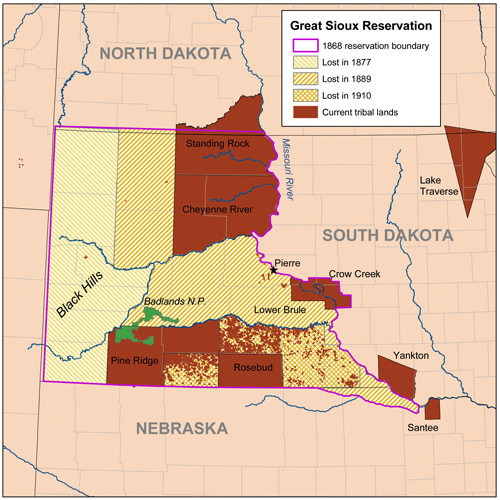We are hearing about the protests going on in N. Dakota regarding the Dakota Access Pipeline. The latest development is the coming of representatives of the UN to insure that everything is being done in accordance with the UN Declaration on the Rights of Indigenous Peoples, a declaration the US never signed.
The argument is being made that construction of the pipeline is somehow a violation of the Fort Laramie Treaty of 1868, a treaty that expanded the boundaries of the Sioux reservation established by the Fort Laramie Treaty of 1851. The argument is being made that the terms of the treaty protect certain sacred and burial sites, protections ignored by the pipeline company. A reading of both treaties will find that such areas were never even addressed under the terms of the treaties. They are available to be read here:
Treaty of 1851, http://digital.library.okstate.edu/kappler/Vol2/treaties/sio0594.htm#mn12;
Treaty of 1868, https://ourdocuments.gov/doc.php?doc=42&page=transcript.
Treaty of 1851, http://digital.library.okstate.edu/kappler/Vol2/treaties/sio0594.htm#mn12;
Treaty of 1868, https://ourdocuments.gov/doc.php?doc=42&page=transcript.
There are some problems with claiming protections under the 1868 treaty, which has been the main defense of the protestors.
First, the main concerns of the treaty were to A) establish boundaries of the Sioux reservation; B) elicit certain promises that settlers, railroads, etc., would not be attacked by members of the tribes; C) elicit promises to end wars; D) establish payments to be made to the tribes by the US government; E) codify certain promises by the US government to "improve" conditions for the tribes. Sacred and burial sites were never even mentioned by the treaty, neither were commitments to consult with the tribes before any development would take place. The latter commitment is part of the UN Declaration we never signed.
Second, the specific area of concern to the Standing Rock band wasn't part of the territory established by the treaty. The following map illustrates the extent of the original reservation (outlined in purple), as well as the territory now included in the Standing Rock reservation (north of the purple line, outlined in brown). The specific area of concern was not part of the reservation until 1875, added to the reservation by an executive order.
In fact, if that area had not been added, the pipeline would be 40 miles distant from the reservation at that point.
In fact, if that area had not been added, the pipeline would be 40 miles distant from the reservation at that point.
Which brings us to this consideration: as the following map demonstrates, the area where the protests are taking place is outside of the reservation.
In fact, the protest is taking place on privately owned/held property, off the reservation. While the protestors are demanding that THEIR property, traditions, and rights be respected, they are disrespecting the property and rights of others.
In fact, the protest is taking place on privately owned/held property, off the reservation. While the protestors are demanding that THEIR property, traditions, and rights be respected, they are disrespecting the property and rights of others.
I am cognizant of the fact that our country has not acted honorably toward our indigenous peoples. Over the years, the US legislature has enacted legislation that significantly reduced the territory ceded to the Sioux under treaty. But we need to be aware of what is happening and how the situation is being manipulated.


No comments:
Post a Comment